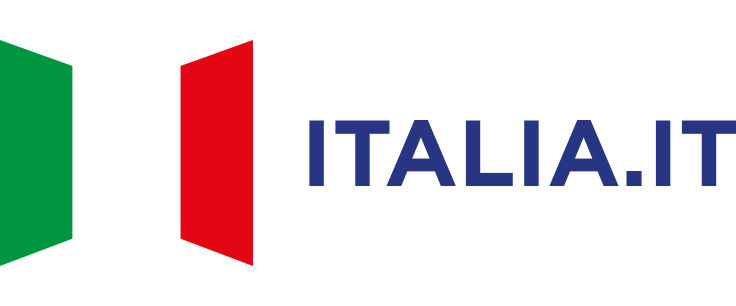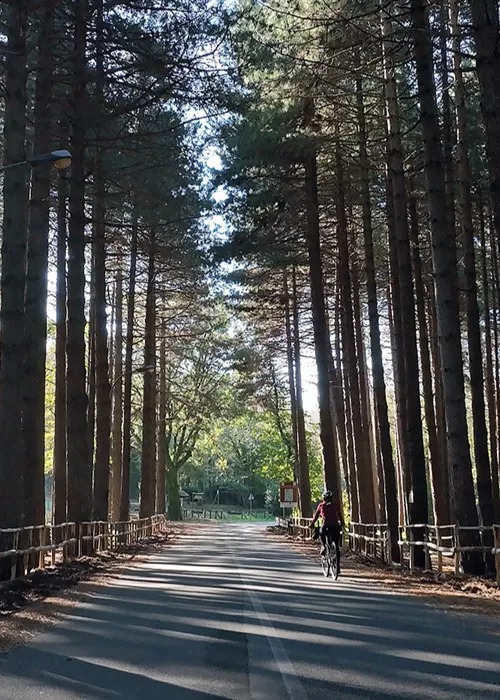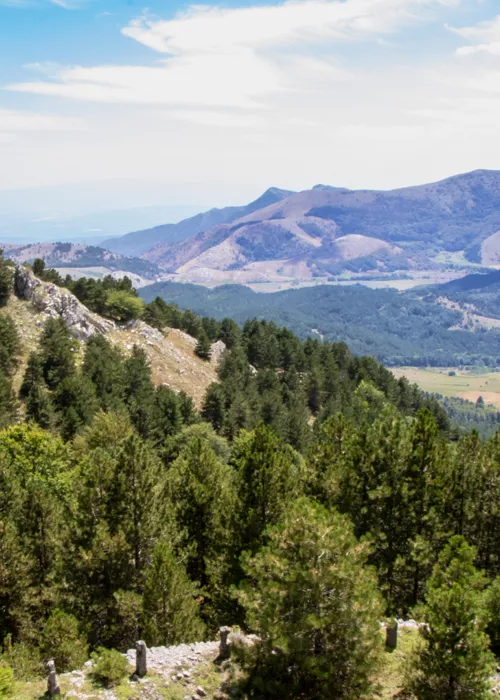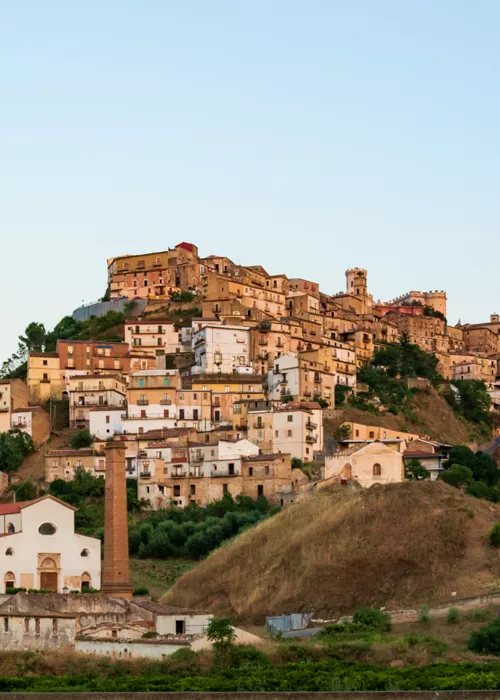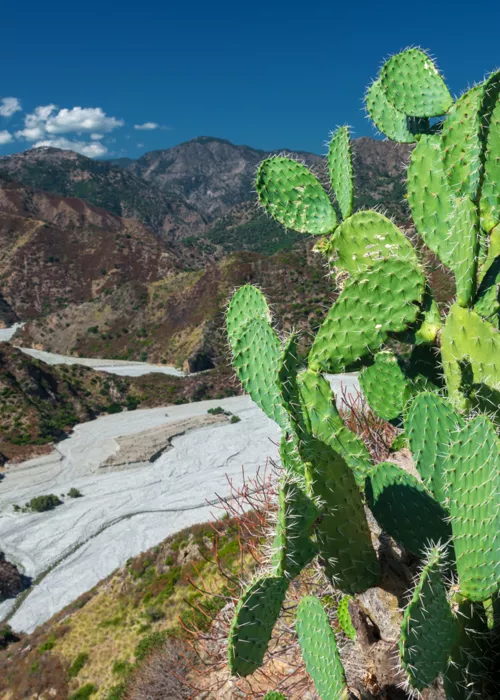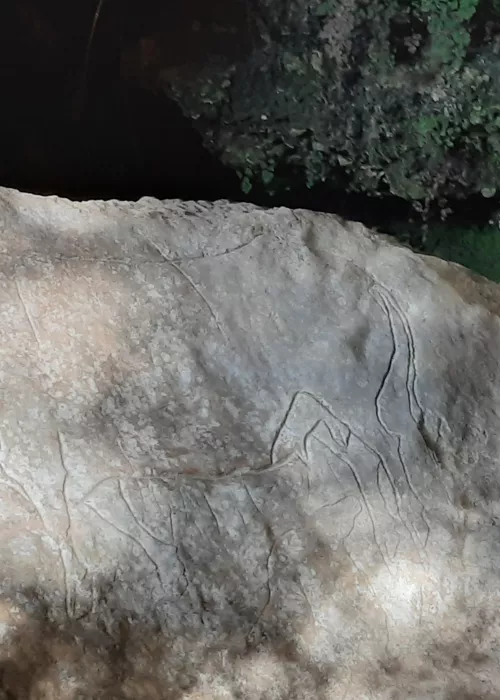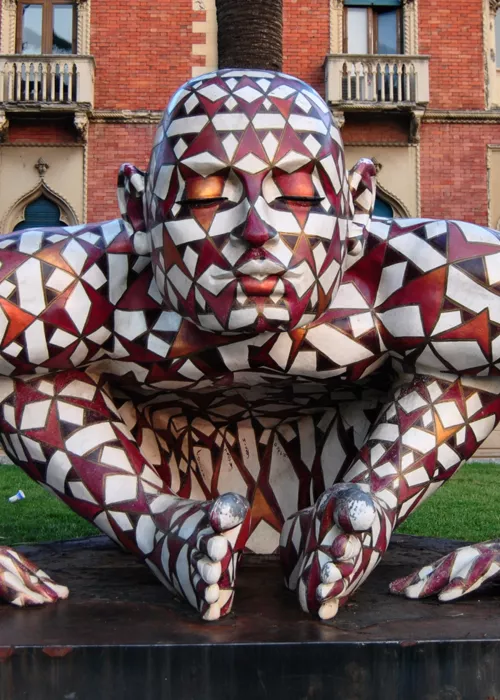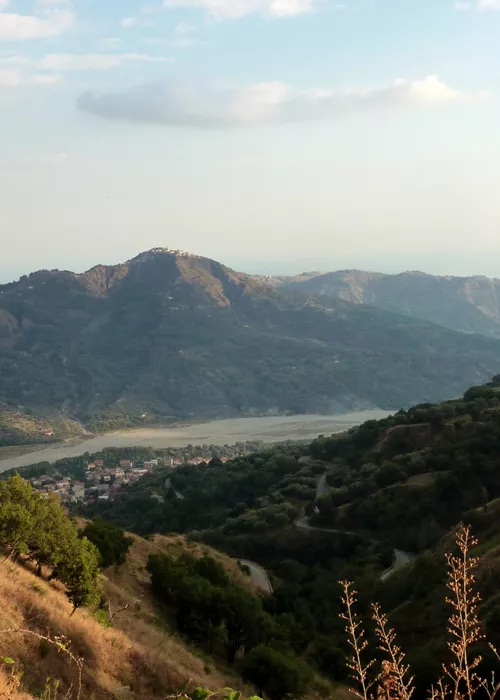Tropea, the pearl of the Tyrrhenian Sea and its heavenly beaches

Along the Norman Route we arrive in Tropea, where our journey begins. Tropea is considered one of the most beautiful villages in Italy, with its maze of narrow streets, squares and open spaces where you can get lost without a destination, among souvenir and local craft shops where you can taste typical products, conferences and cultural initiatives, art exhibitions and tables where you can enjoy a long, slow aperitif. Here the "queen" is the IGP Red Onion, known throughout the world for its colour and its beneficial properties, which make it different from those grown elsewhere. Symbol of Tropea, you will see it in every possible representation or dish. Look up and be enchanted by the elegance of the ancient noble palaces, the Baroque traces, the flowered balconies, the views where the fuchsia of the bougainvillea contrasts with the turquoise of the sea in the background. The heart of the historic centre is Largo Ercole, and you can enjoy every corner, every stone, from Largo Galluppi to Largo Villetta.
The churches are worth a stop, from that of San Francesco D'Assisi to the deconsecrated church of Santa Maria della Neve and, of course, the Norman Cathedral, built in 1100, which houses the icon of Maria Santissima di Romania, protector of Tropea. The long walk to discover the town can only end at the most famous and photographed point of the historical centre: the famous balcony of Largo Migliarese overlooking the turquoise sea. A suggestive view, like that of the Sanctuary of Santa Maria dell'Isola, which stands on a promontory that rises above the sea and seems to "float". If there is one thing you will never forget, it is the unique colour of the Tropea sea and the unmistakable light of its golden sand. It is not by chance that this part of the coast is called Costa degli Dei. Near the San Leonardo rock is the beach of Rotonda, surprising for its seabed and listed among the 50 most beautiful beaches in Europe. If you like peace and quiet, the free beach of Cannone is for you. From the beach of Marina dell'Isola it is possible to reach the Grotta del Palombaro. We recommend ending the day at Paradiso del Sub beach in Zambrone , a stone's throw from Calabria's most famous seaside resorts. Those who choose this enchanted cove, far from mass tourism, can enjoy a true natural paradise, especially in low season. It can be reached after walking for a stretch, immersed in the Mediterranean scrub, and a panoramic staircase carved into the cliff, with a difference in height of about 100 meters. The effort is well rewarded on arrival, when Paradiso del Sub reveals itself in all its splendour. Considered by divers to be one of the best beaches for the spectacular nature of the seabed, with a great variety of marine flora and fauna at different depths, the beach welcomes you with a surface of crystalline water, white sand and typical Mediterranean vegetation clinging to the rocks.
From the Pizzo viewpoint to the Church in the Rock

The journey continues to Pizzo, one of the most beautiful and famous towns in the Vibo Valentia area, one of the most picturesque villages on the coast, perched on the slope of a suggestive promontory that rises steeply above the Tyrrhenian Sea, in the centre of the Gulf of Sant'Eufemia.
Today Pizzo is a modern town, a holiday resort famous for its beaches, characterised by wide sandy beaches and suggestive coves full of rocks, for its clear sea and for its picturesque historical centre. Summer or winter, it's always the right time to plunge your spoon into the melting heart of Tartufo di Pizzo, the Calabrian ice cream that has been the subject of countless attempts at imitation. There's no comparison! Tartufo di Pizzo is inimitable, just as there is no comparison for the opportunity to taste it in its place of origin, Pizzo, in the centre of the splendid panoramic square overlooking the sea, a stone's throw from the Castle. This is the place where you can be sure to escape the industrial production of 100% handmade ice cream, all "Made in Calabria". The Pizzo Tartufo is traditionally eaten in the historic bars of the small square, which offers one of the most suggestive views of the Costa degli Dei. The small square is the "good living room" of the historical centre of Pizzo, a seaside village perched on a small promontory in the centre of the Gulf of Sant'Eufemia. The town lies behind the imposing Aragonese Castle, built in the second half of the 15th century by Ferdinand I of Aragon. Pizzo Castle was the scene of an important and dramatic historical event, and it is no coincidence that it is also known as Murat Castle, after the king of Naples who was imprisoned and condemned to death here. Among the treasures not to be missed in Pizzo is the tiny Chiesetta di Piedigrotta, a jewel on the water, dug entirely out of the tuff. Here, too, history becomes legend. According to tradition, the little church was dug into the sandstone rock by some Neapolitan shipwrecked people at the end of the seventeenth century to thank God for their salvation. The sailors attributed the miracle to the protection of a painting of the Madonna that was on the ship and that they found intact on the beach. The tuff sculptures inside tell the story in a vivid way, barely resisting the passage of time. Before reaching the village of Serra San Bruno, don't miss Lago Angitola, a WWF oasis, the perfect place to get in touch with nature. Here, a short walk of about 4 km will allow all walkers to practice birdwatching and discover species such as the grey heron and the rare black woodpecker. About 45 minutes away is Serra San Bruno, the final destination of the day.
From the Green Serre to the Stone Village

The third day begins with the discovery of Serra San Bruno, a tourist, spiritual, artisan and agricultural centre located between Sila and Aspromonte. The village has preserved its eighteenth-century buildings and is reminiscent of a mountain resort thanks to the dense pine and fir woods of its thousand-year-old forest, a popular destination for hikers. Serra San Bruno owes its origins to the monk Bruno of Cologne, founder of the Carthusian Order, who received from Count Roger the Norman the lands now geographically identified as the Serre Calabre plateau, where he built the Certosa di Santo Stefano del Bosco, the first monastery in Italy and the second in Europe after that of Grenoble in France. Surrounded by centuries-old conifers, giant beeches, oaks and huge chestnut trees, the Certosa was almost completely destroyed by the earthquake of 1783 and then rebuilt in the neo-Gothic style at the end of the nineteenth century and the beginning of the twentieth.
The whole village, with its churches, monasteries and charterhouses, has an aura of mysticism and deep spirituality. The Serra San Bruno area offers countless hiking trails. Among the official itineraries, which can be done on your own or accompanied by specialised local guides, we recommend the Baden-Powell Trail (about 26 km long), which ends at the Sambuco di Mongiana lake in the municipality of the same name. Another recommended itinerary is the Frassati Trail: the first stage links the Certosa to the Santuario del Bosco along a pleasant and accessible route of about 5 km, which crosses the Bosco Archiforo, one of the protected areas of the Serre Vibonesi. We end our tour in Serra S. Bruno, with a stop at the ancient charcoal kilns, home to the last “last men of fire” in Calabria, the master charcoal burners who have handed down an arduous craft that has become increasingly sophisticated over time.
From Serra S. Bruno, we move on to Zungri, a picturesque village situated 571 metres above sea level on the northern slope of the Poro plateau, a few kilometres from Pizzo Calabro and Tropea. As far as the origin of the name is concerned, scholars attribute a Greek origin to the place name Zungri, which means "rock", "tuffs", "cliffs", a name compatible with the morphological characteristics of the area, characterised by the presence of sandstone banks and gullies. The first documented reference dates back to 1310. Numerous studies have shown that the area of the Zungri settlement was already inhabited in prehistoric times, with continuity in the Magna Graecia and Roman periods. Geohistorical elements lead to the hypothesis that Zungri was founded between the 12th and 14th centuries as a result of the development and transformation of an ancient rocky settlement. It was established as a municipality in 1811 and was destroyed several times by earthquakes. A visit to this "city of stone" and its enchanting surroundings is like stepping back in time and enjoying the beauty of the sea and mountains that surround it. In Zungri, we finish the day with an authentic 100% Made in Calabria experience: a local artisan workshop dedicated to the preparation of bread. In the evening, we return to Tropea.
